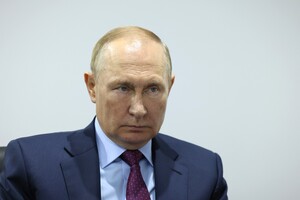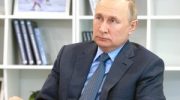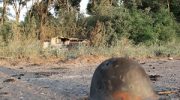The nuclear threats of the head of the Kremlin have become bolder.

Intelligence services of the US and its allies intensify efforts detection of any Russian military actions or reports that may signal that Kremlin leader Vladimir Putin has ordered the use of nuclear weapons in Ukraine. This is reported by Politico, citing the words of current and former US officials.
But any signs that Putin has decided to do the unthinkable in a desperate bid to seize the initiative in the war or force the international community to comply with his demands may come too late, officials warned.
Most Russian aircraft, along with conventional missile launchers, can also deliver smaller tactical nuclear weapons. These weapons are designed for more targeted use on the battlefield than strategic weapons such as intercontinental ballistic missiles, which provide control signals when their units are deployed or assembled for training.
This means that if Putin or his commanders will not want the world to know in advance, the US may never know when Russian forces have replaced conventional munitions with atomic bombs.
This has become an increasingly serious problem as Russian forces try to gain the upper hand in the war against Ukraine, and there are signs that Putin is becoming increasingly unpopular in Russia, especially after he announced a partial mobilization last week.
< p>“We are watching it more closely,” said a US government official with access to intelligence about Moscow's nuclear forces and strategy.
He said the increased surveillance includes the use of additional US and allied intelligence — in air, space and cyberspace, as well as greater reliance on commercial satellites to analyze the actions of Russian units that may be ordered to use nuclear weapons.
Another aspect of surveillance beyond Ukraine is the Russian enclave of Kaliningrad between Poland and Lithuania, where the Kremlin has installed dual-use weapons systems and hypersonic missiles.
Over the past week, flight tracking websites have shown several US Air Force RC-135 Rivet Joint electronic surveillance planes circling the city, allegedly gathering data. Over the past few years, the Russian Federation has modernized its missile depots in Kaliningrad, raising fears of potential nuclear expansion in that area.
After the Russian invasion of Ukraine, Putin made veiled hints that he might resort to using nuclear or chemical weapons. weapons to change the course of the war or if Russia itself is “under threat”.
However, those threats grew bolder last week when he said he was prepared to “use all available means” including “various weapons of mass destruction ».
“I'm not bluffing,” Putin said. In response, the United States warned of “catastrophic consequences,” but deliberately left open what exactly that meant.
Read also: Nuclear danger: what to do after an explosion
Earlier it was reported that already for several months, the USA has been sending a warning to the authorities in Moscow about the serious consequences that await Russia in case of using nuclear weapons.
Related video
The United States is also developing an action plan in case of use of nuclear weapons by the Russian Federation.
See the special topic: Zelensky called on the world to respond to Russian threats to use nuclear weapons The president said that there will be many more nuclear threats. The Ministry of Foreign Affairs criticized the pseudo-referendums in the occupied territories and appealed to the Ukrainians involved in their organization There they hope that the countries that previously called on the Russian Federation for diplomacy will finally understand that Moscow despises them. Russian prisoners were allowed to call their relatives once every few days Ukraine prioritized compliance with the norms of the Geneva Convention. The Russian Federation launched a missile attack on the city center in the Zaporizhzhia region The occupiers destroyed the historic building. Borrell: “The EU condemns the holding of pseudo-referendums in the occupied territories of Ukraine” This is another violation of Ukraine's sovereignty and territorial integrity.




